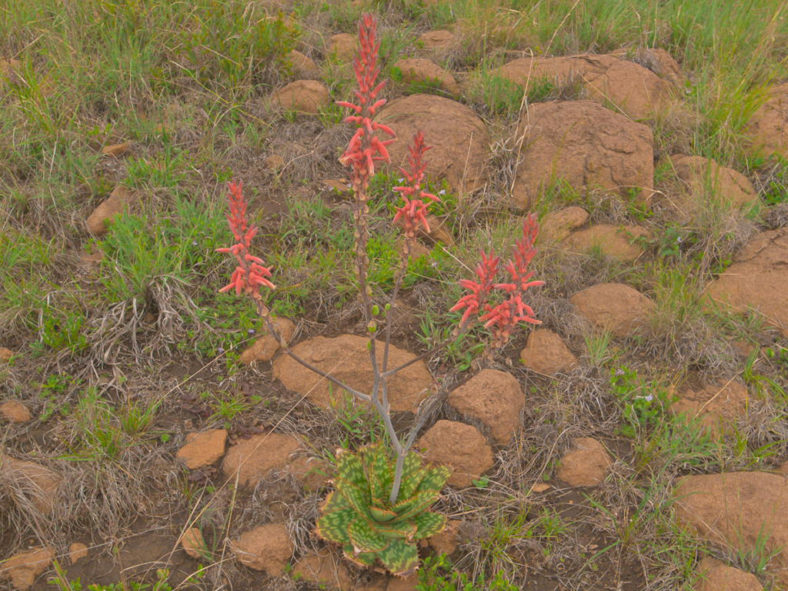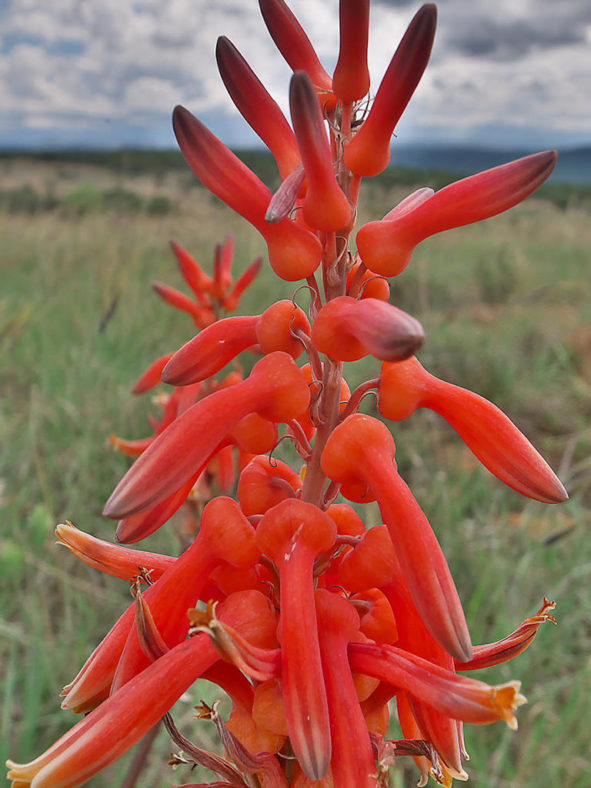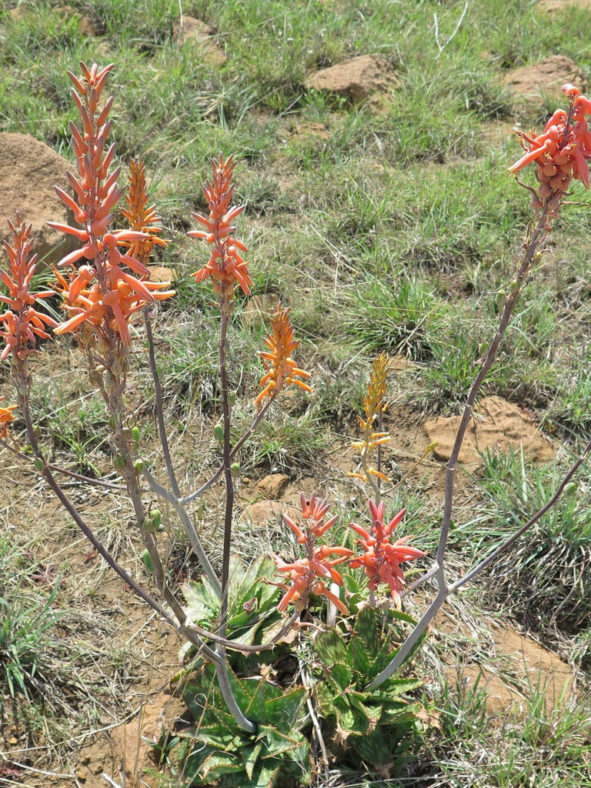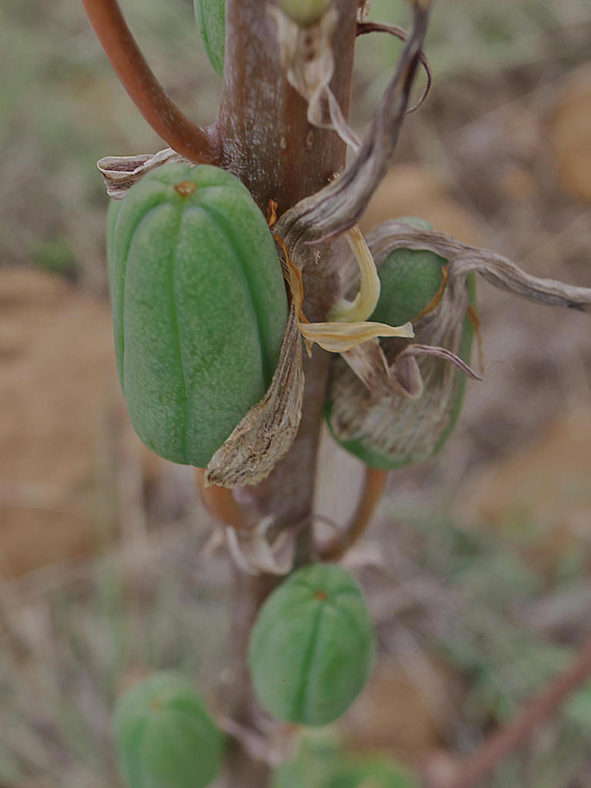Scientific Name
Aloe vanrooyenii Gideon F.Sm. & N.R.Crouch
Common Name(s)
Van Rooyen's Aloe
Scientific Classification
Family: Asphodelaceae
Subfamily: Asphodeloideae
Genus: Aloe
Etymology
The specific epithet "vanrooyenii (van-ROOY-en-ee-eye)" honors Pieter van Rooyen of Greytown, who stimulated and facilitated further taxonomic studies of this unique maculate Aloe.
Origin
Aloe vanrooyenii is native to South Africa. It is found as a thornveld savanna component mainly around Ladysmith and is also known from the Dundee and Underberg Districts in KwaZulu-Natal and Harrismith in Free State province.
Description
Aloe vanrooyenii is a small, slow-growing succulent that forms a stemless or rarely very short-stemmed rosette of triangular, glossy, pale green leaves with green to whitish spots variously shaped and sized, often merging in transverse bands. The rosette usually grows solitary or sometimes branched from the base, forming a small group, and can reach up to 12 inches (30 cm) in diameter. The leaves can measure up to 6 inches (15 cm) long and 3.2 inches (8 cm) wide. The upper surface of the leaves is shallowly and broadly grooved, while the lower surface is convex and sometimes has small teeth arranged in a central row near the apex. The margins of the leaves have a whitish, near-translucent edge and are armed with very sharp, brownish-orange teeth.
The flowers appear on sparsely branched panicles that can grow up to 32 inches (80 cm) tall in early summer. They are orange or red, cylindrical-trigonous, swollen at the base, measuring up to 1.5 inches (3.8 cm) long and 0.3 inches (0.8 cm) in diameter. One of the main distinguishing characteristics of this species is the large size of its erect, cylindrical-oblong, matt green to purple-brown fruits. Also, it is the only spotted Aloe (Maculate Aloe) from KwaZulu-Natal that regularly blooms in summer. The fruits can grow up to 1.1 inches (2.8 cm) long and 0.7 inches (1.8 cm) in diameter.

How to Grow and Care for Aloe vanrooyenii
Light: When growing A. vanrooyenii indoors, place your plant in a window with plenty of bright indirect sunlight. Rotate the pot once or twice a week so that all sides of the plant receive equal lighting. Outdoors provide light shade, especially during the hottest parts of the day.
Soil: Plant A. vanrooyenii in a well-drained soil mix specially formulated for succulents or make your own. Drainage is essential because too much moisture around roots can cause root rot.
Hardiness: When temperatures shift below 50 °F (10 °C), it is time to bring your plant back inside. A. vanrooyenii can withstand temperatures as low as 30 to 50 °F (-1.1 to 10 °C), USDA hardiness zones 10a to 11b.
Watering: This succulent does need regular watering but is very tolerant of drought conditions for short periods. Water deeply, but only when the soil is dry. Cut back on watering during the winter months. Do not let water stand in the rosettes.
Fertilizing: A. vanrooyenii generally does not require fertilizer but may benefit from the extra nutrients. Feed with a fertilizer for succulents in spring and summer only. Be sure to follow label directions.
Repotting: This plant is not particularly fast-growing and will only rarely need repotting. Repot it in the spring in a container a few inches larger in diameter every few years to keep it from becoming rootbound.
Propagation: Propagating A. vanrooyenii can be done using the offsets or seeds from a mature plant. Remove offsets from the mother plant in late spring or early summer. For best results, sow seeds during the warm months.
Learn more at How to Grow and Care for Aloe.
Toxicity of Aloe vanrooyenii
A. vanrooyenii is not listed as toxic for people and pets.
Links
- Back to genus Aloe
- Succupedia: Browse succulents by Scientific Name, Common Name, Genus, Family, USDA Hardiness Zone, Origin, or cacti by Genus
Photo Gallery
Click on a photo to see a larger version.


